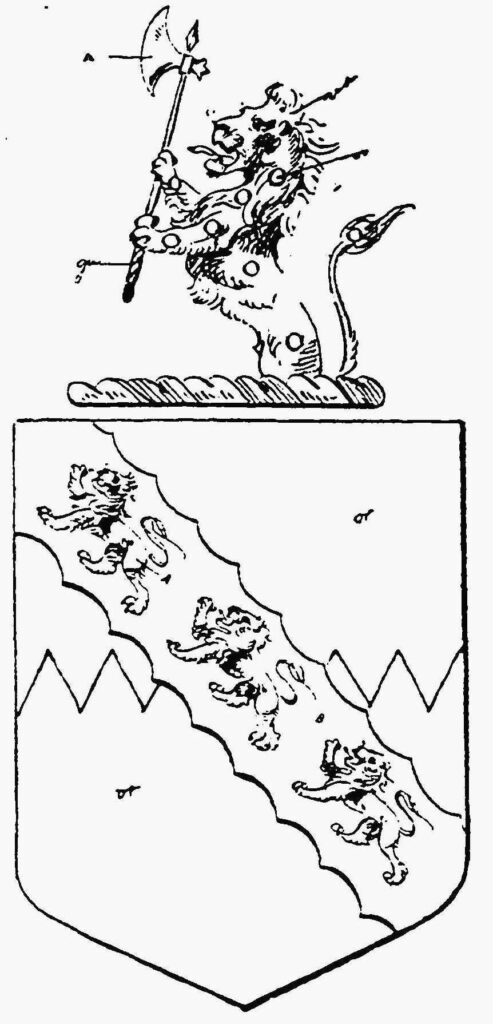History of the Emerson Seal: Part 1

This is the first article in a three-part series about the history of the College’s seal.
Emerson College’s striking seal has a history that goes back to 1535, when Ralf Emerson of Foxton in the County of Durham, England, was granted both arms and crest by the Garter Principal King of Arms for the infamous King Henry VIII. The coat of arms was described as follows:
- The shield was gold and green with a zig-zag line in the middle separating the colors. The Accedence of Armorie (1563) states that the two colors together represented joy, pleasure, and worldly riches.
- On the shield was a blue, diagonal band with scooped-out edges going from the upper left to the lower right corner and holding three silver walking lions. The Accedence states that these two colors together symbolized discretion and reliability in service.
The crest was composed of the upper half of a green lion shown in profile, its tongue protruding from its mouth, with gold roundels. According to The Accedence, the green symbolized joy, mirth, and gladness while the gold roundels represented a trustworthy person. The lion was holding a battle-axe with a dark red handle and green head, the two colors together indicating that the family was courageous and persistent.
The lion was a prevalent symbol in 16th-century British heraldry due to its status as king of beasts. It typically represented courage in battle, political intelligence, physical strength, and a noble character.
Very little is known about Ralf Emerson and there are no official records identifying his descendants, but Thomas Emerson Jr. Esquire is largely believed to be his son or grandson. Thomas was the Lord of the Manor of Bradbury and Hilston in Durham before immigrating to Massachusetts in 1638. There are several pieces of evidence pointing to Thomas being a direct descendant of Ralf, such as the family arms being carved into the tombstone of Thomas’s son.
In 1831, Sir James Emerson of Belfast, a distant cousin of the English Emersons, married Letitia Tennent, the daughter of wealthy banker William Tennent of Belfast and Tempo. The following year, William Tennent died and in his will directed James Emerson to change his last name to “Emerson Tennent.” In 1832, he was also given arms and crest, part of which included an exemplification of those given to Ralf Emerson along with the new motto “Deus Protector Noster.”
According to British law, to use arms or a crest, individuals must be able to prove that they are descended from the original grantee through an uninterrupted male line. Charles Wesley Emerson was a direct descendant of Thomas Emerson Jr., but since there is no official evidence of Thomas Emerson Jr.’s connection to Ralf Emerson, his family should technically not have displayed it as its own. Sir James Emerson Tennent’s only male child died without offspring, so no one is entitled to use his crest and arms.
Additional Sources
Eleanor Jones Hutchinson Family Papers, donated to Emerson College by Eleanor Jones Hutchinson in 2022.
Data Concerning the families of Bancroft, Bradstreet, Brown, Dudley, Emerson, Gamble, Goodridge, Gould, Harshorne, Hobson, Kemp, Kendall, Metcalf, Nichols, Parker, Poole, Sawtell, Wainwright, Woodman, etc. in England and America, 1277 to 1906 A.D. by Thomas Gamble, 1906.
Jenn Williams (Archives and Special Collections)
